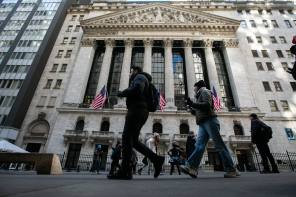
Investors have had access to reasonable, if not detailed, disclosure of selected fund costs in Europe and the UK for a few years now.
This came first in the form of the total expense ratio, which was implemented in the UK on the back of the Ucits III directive, and more recently in the segmented form of ongoing charges and performance fees.
In the UK, both measures improved on the old practice of quoting only the annual management charge, which omits material operating costs outside of the management charge. So far, so good. We are on an upward trajectory in terms of cost disclosure. Then again, perhaps not. The elephant in the room remains trading costs, which are excluded from ongoing charges, as they were from the total expense ratio calculation.
The IMA under Daniel Godfrey has, to its credit, proposed improved disclosure of trading costs. But the proposal is focused only on the explicit costs of dealing commissions and stamp duty. These can be dwarfed by implicit costs, such as market impact and spreads, so leaving them out can dramatically understate transaction costs. Indeed, fixed income securities are traded on a spread basis, so there are no explicit commissions.
The UK is hardly alone in its failure to force fund firms to report both explicit and implicit trading costs – no regulatory regime does, to my knowledge.
On the other hand, research from the likes of institutional trading consultancy ITG has long shown the importance of these costs, as has a recent paper by Roger Edelen, Richard Evans and Gregory Kadlec in the CFA Institute’s Financial Analysts Journal. The trio examined the impact of aggregate trading costs on fund performance among US funds, and concluded “invisible trading costs have a detrimental effect on fund performance that is at least as material as that of the (visible) expense ratio”.
The data in the study showed that implicit trading costs accounted for just more than 80 per cent of aggregate trading costs averaged across all funds reviewed.
To make this more concrete, we can pull some real numbers from the M&G UK Growth fund (I chose it because M&G produce well laid-out annual reports).
In the year ending July 31 2013, the fund reported dealing commissions of £487,000 and associated taxes of £832,000, for a total cost of £1,319,000. If we assume the commissions are only 20 per cent of total trading costs (excluding tax) that would leave us with an estimated total trading cost (excluding tax) of £2,435,000, and an all-in trading cost including tax of £3,267,000.
Applying that to average monthly net assets in the same period of £593,495,248, we arrive at an all-in trading cost estimate of 0.55 per cent. This compares to a figure of just 0.22 per cent of monthly net assets when using commissions and stamp duty alone.
Implicit trading costs can be measured in different ways, but the regulator or the IMA should identify a standard approach and ensure they are included in any measure of trading costs. Otherwise, a potentially useful and predictive disclosure may materially mislead investors as to the level of trading costs and their potential impact on fund performance.
Christopher Traulsen is director of European Fund Research at Morningstar



